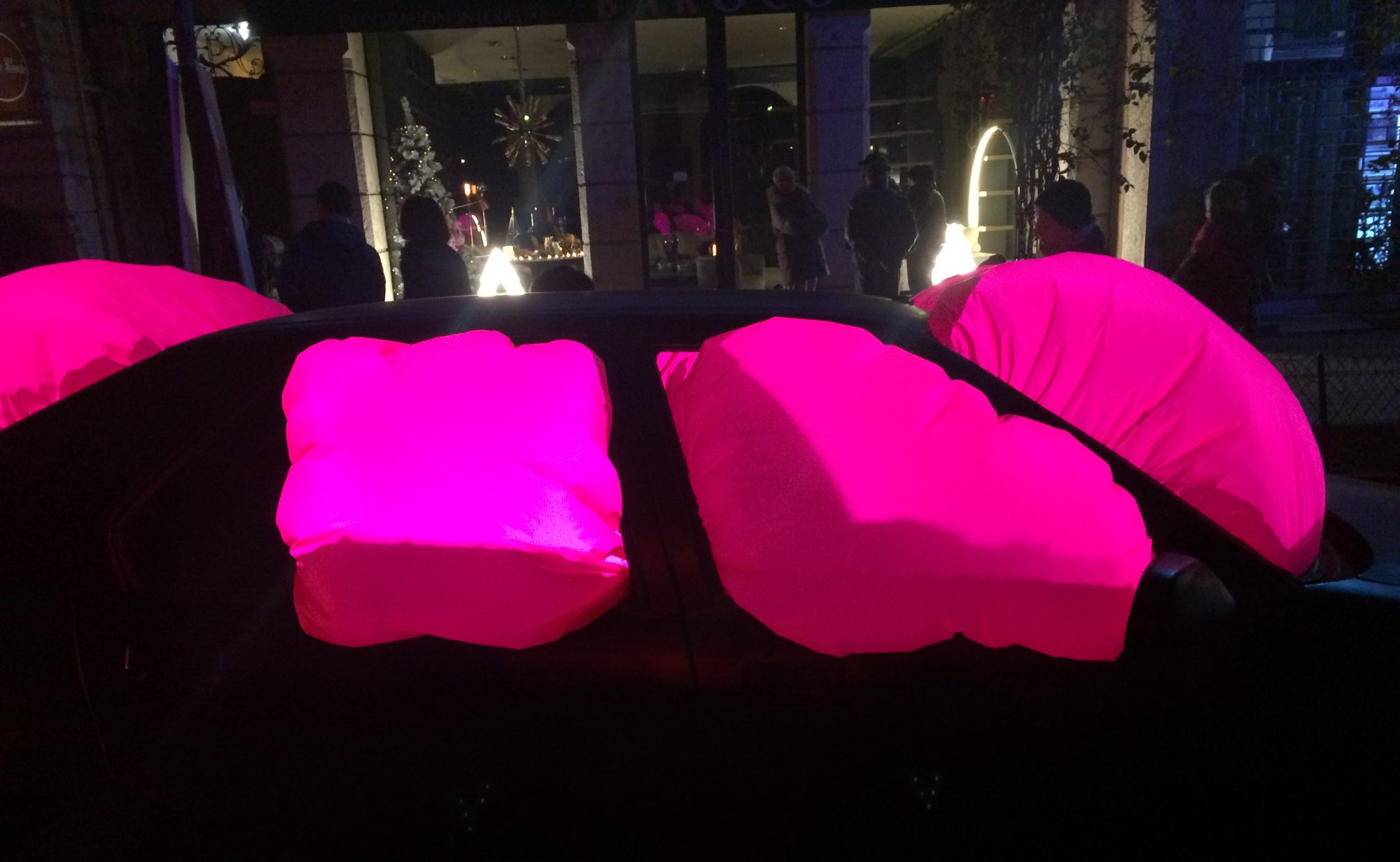Hello Readers,
For our Astu Class, I went to MOA and saw the Amazonia exhibition. To be honest, I was mad at myself for not seeing it before because I had a great time. After visiting Amazonia, I checked out the other sections of the museum and I was fascinated
. 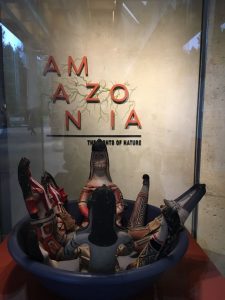
Before entering the Amazonia section, there were seven male and female figures sitting inside of a bowl and the name of the piece was ” Kitxoko Clay Dolls”. It captured my attention the moment I saw it. Then I read about it and learned that elder women from Karaja which means three related groups) are known for their ceramics and its an important source of income. There population was around 9.000 in 18 th century however after, their lands were occupied by industrial farmers because of the policies of the Brazilian government and their rivers exploited for commercial fishing. Because of this, their population decline and 600 individuals were left by the early 20 th century.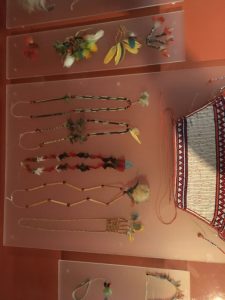
There was a section called the “Market Place” and there were jelewery, handbags and all kinds of belongings which I learned was made by The Yekuana woman. They made pottery, loincloths and seed necklaces and men made baskets, combs, and bows. In 2009, the Brazilian National Foundation
n made a project to support Indians however it was a failure. The Yekuana have used their crafts to affirm their identity and resilience. About 1900 individuals have migrated from their traditional territories to escape from white settlers.
Another peace which attracted me looked like toys for children in first sight. However, after reading it, I learned that it wasn’t for children at all. These figures were called “Balata Figures” which were made of balata, the latex of the tree known in Brazil. I learned that these are floated down the river to trading posts or warehouses in Amazonian villages. During world war II, The Brazilian government promoted 55,000 peasants from northeast to the Amazon to participate in the war effort. These soldiers remained in Amazonia, molding figures out of latex as a way of life. Moulding these figures became a tradition and a way to supplement income.
I love the quote which was attached to the door, ” Everyone has the right to a protected and balanced environment ” which made me think after seeing this exhibition. The Amazonian indigenous were forced to leave their lands after the white settlers just like the indigenous people in Vancouver. To read their history made me feel heartbroken. At the end of the exhibition, there was this wall covered with drawings of kids who visited the exhibition. They wrote all kinds of slogans like ” I can treat cultures with respect” and ” I can respect first nations culture” which I think was really nice because to teach this to kids in an early age is extremely necessary.
Also, there was this video named ” Trails of Knowledge: Higher Education for Native Brazilians” and it was about the everyday life of Indians as high education students. The kids who they interviewed said that they were proud to be Indian but the problem that they were having is to be able o keep up with the rest of the class because their background education is too different. The sentences of one girl which they interviewed was striking. She said ” When you were little, you think you are perfect but as you grow up, you start learning that in fact, you are different from others and you need to protect and defend your culture because no one is going to do that for you”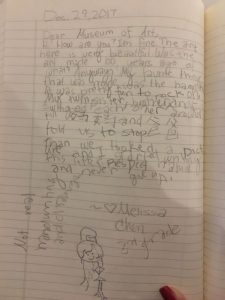 w
w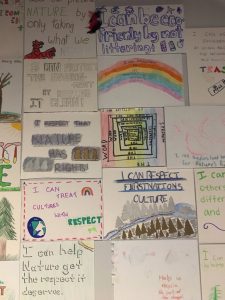
After the exhibition, I understand the issues of Indigenous people and their concerns. I read an article from the Guardian about the Peru tribal leaders threatened to block the government from accessing their territories and halt oil production unless an indigenous rights law is applied within 20 days. I agree with them and I think the governments have to be more sensitive about the Indigenous rights. I like the way Canada especially UBC acknowledges the fact that we are in the lands of Musqueam people and I really respect that
